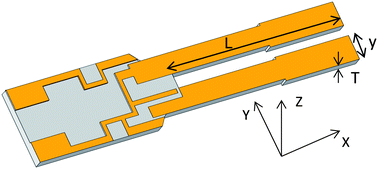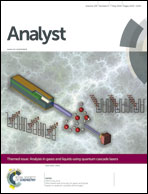A quartz enhanced photo-acoustic gas sensor based on a custom tuning fork and a terahertz quantum cascade laser
Abstract
An innovative quartz enhanced photoacoustic (QEPAS) gas sensing system operating in the THz spectral range and employing a custom quartz tuning fork (QTF) is described. The QTF dimensions are 3.3 cm × 0.4 cm × 0.8 cm, with the two prongs spaced by ∼800 μm. To test our sensor we used a quantum cascade laser as the light source and selected a methanol rotational absorption line at 131.054 cm−1 (∼3.93 THz), with line-strength S = 4.28 × 10−21 cm mol−1. The sensor was operated at 10 Torr pressure on the first flexion QTF resonance frequency of 4245 Hz. The corresponding Q-factor was 74 760. Stepwise concentration measurements were performed to verify the linearity of the QEPAS signal as a function of the methanol concentration. The achieved sensitivity of the system is 7 parts per million in 4 seconds, corresponding to a QEPAS normalized noise-equivalent absorption of 2 × 10−10 W cm−1 Hz−1/2, comparable with the best result of mid-IR QEPAS systems.

- This article is part of the themed collection: Analysis in gases and liquids using quantum cascade lasers

 Please wait while we load your content...
Please wait while we load your content...